
How To Speed Up Recovery Time After Corrective Eye Surgery
Corrective eye surgery involves using a surgical procedure called Laser-assisted in situ keratomileusis (LASIK) or Photo-Refractive Keratectomy (PRK). Both procedures are designed to help you see clearly again so you can handle your everyday tasks without the need for glasses or contacts. Laser eye surgery does not require a lot of time, but there are things you should be aware of and keep in mind if you want to learn how to speed up PRK recovery.

What Happens After Lasik Surgery?
Once you have completed LASIK or PRK eye surgery, your eyes will start healing immediately because the initial healing happens rapidly. However, if you are experiencing some blurred vision and fluctuations in your vision for several weeks or even months after laser eye surgery, don’t be alarmed since this is quite normal.
At laser vision correction clinics in Los Angeles your ophthalmologist or LASIK surgeon will usually request to see you the day after your surgery to check your visual acuity and make sure your eyes are healthy and healing as they should be. Many patients can legally drive without their eyeglasses or contact lenses and can go back to work the day after their LASIK procedure.
Once you do corrective eye surgery, there are regular follow up visits that are scheduled for a period of six months or longer to continually monitor your vision and eye health. In many circumstances, a patient’s vision should be stable by the time they reach the six-month post-op visit.
It is also important to note, that if you experience dry eyes, halos, glare or other visual disturbances after LASIK eye surgery, most of these symptoms should be gone, or somewhat reduced at the six-month visit.
How Long Does Blurred Vision Last?
You have to keep in mind that LASIK or PRK surgery in Orange County involves an incision, and your eyes need to heal after that procedure. The body heals through the inflammation process, so this can temporarily impact clear vision. The American Academy of Ophthalmology says it is not uncommon for a patient’s vision to stay blurry for several weeks or even months after LASIK.
Since experiencing blurred vision is a symptom of the body going through the healing process, there isn’t much that can be done to treat this problem. Most of the time, the blurring will fade over time, however, the precise amount of time needed can be different from every individual.
What Happens If My Vision Is Still A Problem?
If your vision is troubling you 90 days after corrective eye surgery, your eye surgeon may advise you on a LASIK enhancement procedure to sharpen your eyesight.
Many surgeons will wait at least 3 to 6 months before performing an enhancement. The reason why they wait for so long is that they want to make sure any residual refractive error is totally stable. This is more advantageous for the patient since it increases the possibility that the last treatment they require helps them reach the level of visual clarity they have been aiming for.
After a successful LASIK or PRK surgery in Los Angeles, you should do your utmost to protect your eyes from injuries, and you should continue to do so even after your surgeon informs you that your eyes have completely recovered.
What Are Mistakes To Avoid After LASIK Surgery?
After your laser eye surgery, your doctor will run down a list of the Dos and Don’ts with you and go over how to speed up PRK recovery. Nevertheless, it is very easy to forget these precautions, since they are things we naturally do every day and we have become completely innate to doing these activities. You will recover faster if you avoid these mistakes post-surgery:
Not Getting Enough Rest
Even though laser eye surgery is a very easy and simple process, your body still needs lots of rest so it can properly heal itself completely just like more demanding procedures. Therefore, it is recommended to take off a few days from work or school, so you can just concentrate on yourself and getting enough rest for a quicker recovery.
Don’t Use Gadgets Immediately After Surgery
Televisions, computers, smartphones, and other digital devices put a huge strain on your eyes. You could experience uncomfortable dryness as well. So, it is best to wait for a day or two after eye laser surgery before you go back online and watch television.
Not Wearing Sunglasses
Not only do you need to protect your eyes from the blue light that your gadgets emit, but you also need to protect your eyes from the harsh UV rays the sun produces after your surgery. A good way of doing this is to wear sunglasses and spend lots of time indoors while you are healing.
Don’t Wear Eye Makeup
It is advisable not to wear eye makeup for some time after surgery because if the makeup gets into your eyes it could cause irritation. You should also avoid lotions, moisturizers, and other face products since there is a risk that it can get into your eyes. Keep away from them until your doctor informs you that you have fully recovered.
Don’t Rub Your Eyes
It is common to experience some mild discomfort after LASIK surgery. Therefore try to stop yourself from rubbing or dabbing near your eyes for about two weeks to avoid getting any infections or causing contamination.
Do Not Drive After Surgery
Your laser eye surgeon will strongly advise you to find a person who can drive you home after your LASIK surgery. As you are most likely fully aware, driving requires you to focus yourself visually and this can be very tiring particularly after the procedure. Once you have booked your LASIK procedure, make sure to arrange your transportation for that day in advance.
Be Careful When Taking A Bath Or Shower
You can take a long, hot soak in the tub or a shower after LASIK, but try not to get water or soap in your eyes. This could sting, and in the worst cases, can cause an infection.
Make sure you choose a professional you can trust to provide you with the clear, crisp vision you are looking for. Your LASIK surgeon should give you all the guidance and care you need to heal properly. If you are interested in getting 20/20 vision, give Excel Laser Vision Institute a call at + (818) 907-8606 today.

Lasik Eye Surgery Cost For Seniors With Blurry Vision
Losing your eyesight is highly considered to be the worst losses anyone can experience. Fortunately, a lot of us will not suffer from total blindness, but millions, who inquire about the LASIK eye surgery cost, are presently living with some kind of visual impairment.

The National Eye Institute (NEI) claims that older adults constitute the majority of the visually impaired population in the United States. Although vision loss is very common later in life, it is especially difficult for the elderly to acknowledge and adapt to since other senses like hearing, smell and taste usually weaken as we age as well. You can make sure an aging loved one is properly cared for and request laser eye surgery cost for their eyes to take advantage of the resources available to help them with their vision loss.
As soon as you reach the age of 60 and beyond, you should be aware of any warning signs of age-related eye health problems that could result in vision loss. Sadly, many eye diseases do not have any early symptoms. Also, an elderly loved one may have an eye disease that develops painlessly or goes unnoticed until the condition is quite severe. The earlier you manage to detect and treat these eye conditions, the more likely the patient can maintain good vision.
How To Maintain Visual Health?
One of the first things to do when you want to lead a safe and active life with impaired vision is to understand the severity and underlying cause of the vision loss.
Many ophthalmologists recommend that people who are 65 years of age and older should get a dilated medical eye exam every year or two. During this eye exam, the eye doctor will assess a patient’s eyesight and check out their overall health and function of both eyes.
Checking for new or worsening eye conditions and maintaining a current prescription for eyeglasses and/or contacts are important for the best visual function at any age.
Most of the time, vision loss is a very slow process, so the elderly (and their immediate family) might not even know how impaired their eyesight has become. Family members and caregivers can take account of an elderly person’s vision by looking for any developments in the following:
- You notice them fall or walk carefully.
- They miss objects when they try to reach for them.
- They stop doing everyday vision-related activities such as reading or writing.
- They bump into things or knock things over.
- They squint or tilt their head when trying to focus.
What Causes Vision Loss?
As we age, our vision starts to decline. Therefore, it becomes more challenging to read the fine print, to move around in the dim light, or to distinguish the difference between black and navy blue. These vision changes are a normal part of aging and don’t usually mean you have to ask about the LASIK eye surgery cost any time soon. However, more serious forms of eye conditions can happen as a person ages.
Not to mention that people of any age who suffered from a stroke, traumatic brain injury, or a brain tumor could experience several physical changes, which includes vision loss. This loss may be temporary, but also could be permanent.
As mentioned before, it is common for older people to experience vision loss, but their poor eyesight could be due to one of these four conditions:
- Macular degeneration
- Glaucoma
- Cataracts
- Diabetic Retinopathy
Here are the most common symptoms and warning signs:
Macular Degeneration: A person usually experiences vision loss in the center of the eye, blurred vision, when they look at straight lines they appear wavy, they require more light to see, and oftentimes affects one or both eyes.
Glaucoma: Moderate loss of peripheral vision. Sufferers experience difficulty driving at night and sense a loss of contrast.
Cataracts: People with cataracts have hazy vision, complain about difficulties driving at night, double vision, have problems telling colors apart, and have a sensitivity to glare.
Diabetic Retinopathy: Diabetics frequently suffer from blurred or changing vision, find it hard to read, complain of floaters, and their central or peripheral vision becomes affected.
Treatment Options
Some of these conditions can be treated if they are diagnosed early enough. However, if they are left undiagnosed or treated, it could leave the patient with severe eye loss, or even blindness. Also, sometimes the damage that has occurred is permanent, but further vision loss can be prevented if you ask for LASIK eye surgery cost when you schedule a consultation with your ophthalmologist. If the patient is diabetic, it is important to stabilize their blood glucose levels, so they can prevent diabetic retinopathy from ever happening. However, if the condition has already developed, laser surgery can sometimes prevent further loss. When there is an advanced retinopathy, it is usually treated with a microsurgery called vitrectomy, which removes and replaces eye fluid.
How To Improve The Home For Those with Poor Vision?
There are many affordable ways and simple changes you can make in the house to help your loved one or someone you know to stay safe and comfortable.
Here are the most common improvements:
Reduce glare and get better lighting – adding more lamps and lighting throughout the residence can help the individual use the remaining vision they have left effectively. See what quality of light (white or yellow) is easier for them.
It is also important to reduce glare in the home. Do so by installing blinds or shades on windows in the house and make them wear anti-glare sunglasses and visors outdoors.
Highlight Dark And Light Contrasts Within The Home – create contrasting colors using paint or tape to help the person with eye loss find and use items in the house. For instance, make sure that plates, cups, and utensils contrast with the countertops and table to help them to prepare their food and dine with minimal struggle. Also, find outlet covers that create a contrast between the power supply and the wall, so they can easily find the light switch. Make sure the towels in the bathroom have a color that contrasts with the walls and install handrails along staircases that contrast with the walls to prevent them from falling.
Vision loss is very common as we age, but when vision problems become too serious there could be an underlying condition that is very easy and painless to treat. If you want further information to help you or someone you know who is suffering from vision loss, give Excel Laser Vision Institute a call at + (818) 907-8606 today.
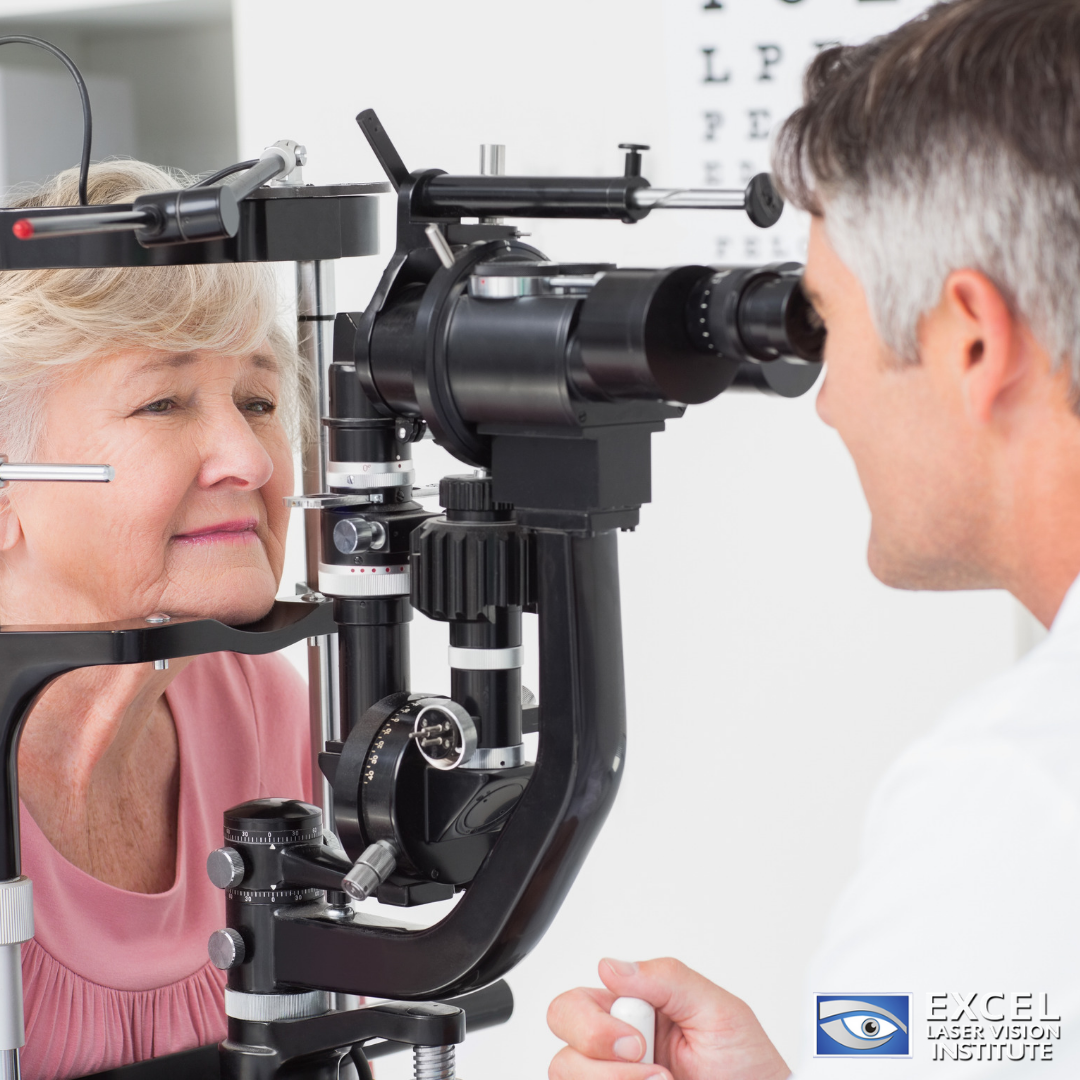
The Best Lasik Surgeons In Los Angeles Can Treat Glaucoma
The best Lasik surgeons in Los Angeles describe Glaucoma as a group of eye conditions that damage your eye’s optic nerve. Getting diagnosed in the early stages of glaucoma is important and may improve your options for treatment.
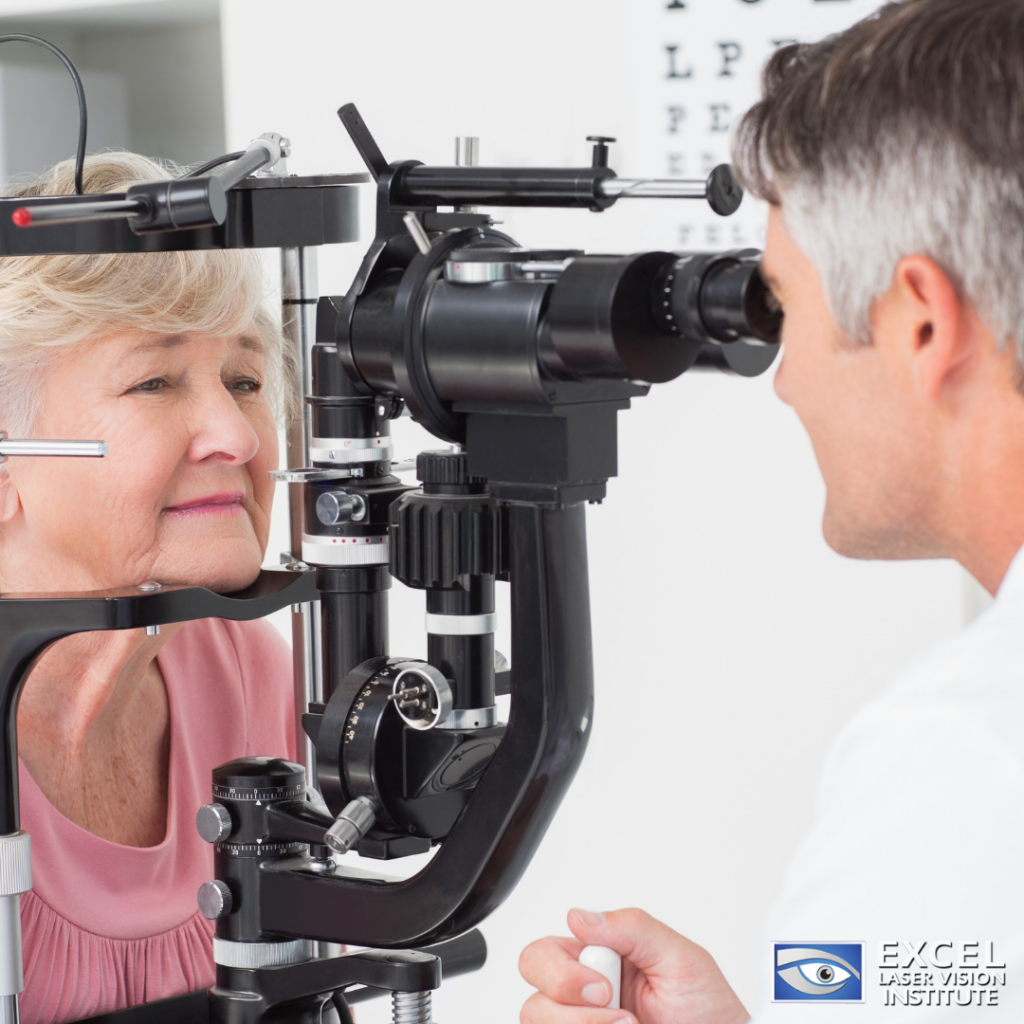
What Is Glaucoma?
In most cases, Glaucoma occurs when the pressure inside the eye is too high. The pressure can lead to damage of the optic nerve. When the optic nerve is impaired, it has a tough time transmitting images to your brain. If the damage continues, glaucoma can result in permanent vision problems and if the person neglects to receive treatment, glaucoma can result in complete blindness within a short number of years. There are varying risk factors for glaucoma. It’s sometimes inherited and could make its appearance later in life.
Some people have glaucoma and don’t even know it because early symptoms can be somewhat mild. To avoid long-term visual loss, it is advisable to visit the best Lasik surgeons in Los Angeles to provide any necessary treatment.
People who are forty years of age and over, and have a family history of glaucoma, should consider getting a thorough eye exam from an optometrist every one to two years. Also, if you have health conditions such as diabetes, or are at risk for other eye diseases, make it a point to visit your eye doctor more often.
What Causes Glaucoma?
In many circumstances, glaucoma is a result of higher than usual pressure inside the eye. This is a condition known as ocular hypertension. However, glaucoma can sometimes happen even when the pressure inside the eye, which is called intraocular pressure or “IOP” is well-adjusted. It is common to see optic nerve damage and vision loss in many types of glaucoma since the pressure inside the eye (IOP) can be extreme.
Normally, the space between the cornea (the clear front surface of the eye) and the lens inside the eye is filled with a clear fluid called aqueous humor. This fluid is responsible for feeding and caring for the inside of the anterior part of the eye. Furthermore, it keeps the shape of the eye by retaining a properly pressurized eyeball.
The ciliary body, which is located around the eye’s lens, steadily produces aqueous humor. The aqueous humor is drained from the eye through a mesh looking channel called the trabecular meshwork that is situated in the angle formed within the eye where the cornea and iris join together.
If there is a situation where the drainage angle closes down or the trabecular meshwork gets clogged, the aqueous humor cannot drain from the eye quickly enough, and the pressure inside the eye (IOP) accumulates.
On the whole, glaucoma happens when there is too much pressure inside the eye which leads to damage to the optic nerve that is located at the back of the eyeball and may cause permanent vision loss.
Further study has concluded that low intracranial pressure, which is the pressure that encircles the brain, is another risk factor for glaucoma.
What Are The Types of Glaucoma?
There are two significant types of glaucoma which are:
Primary Open-Angle Glaucoma
This is the most universal type of glaucoma. It happens slowly and is when the eye does not drain fluid properly (sort of like a backed-up drain). This leads to eye pressure building up and begins to damage the optic nerve. This type of glaucoma is painless and does not initially result in vision changes.
There are a small number of people who have optic nerves that are extremely delicate to normal eye pressure. This could signify that they are at a huge risk of developing glaucoma. These individuals should regularly have eye exams to detect early signs of damage to their optic nerve.
Angle-Closure Glaucoma (Closed-Angle Glaucoma Or Narrow-Angled Glaucoma)
This type of glaucoma usually occurs when the person’s iris is adjacent to the drainage angle within their eye. The iris starts to obstruct the drainage angle. When the drainage angle is totally closed off, eye pressure increases rapidly. This is referred to as an acute attack. This is an extreme danger to the eye, and you should get in touch with the best Lasik surgeons in Los Angeles immediately, or you will go blind.
These are the symptoms of an acute angle-closure glaucoma attack:
- Blurry vision
- Severe eye pain
- Headache
- Nausea
- Vomiting
- Seeing rainbow-colored rings or halos around lights
A lot of people with angle-closure glaucoma develop it slowly. This is known as chronic angle-closure glaucoma. In the beginning, there are no signs so these people carry on as normal until the damage is very serious or they have an attack. It is important to note that angle-closure glaucoma can result in blindness if not treated immediately.
How Does An Optometrist Treat Glaucoma?
Surgery is not the only method of treating glaucoma. Various treatment methods depend on the severity and how early on you got diagnosed. Treatments for glaucoma can include medicated eye drops, microsurgery, laser treatments, and of course other forms of eye surgery.
You should know that glaucoma treatments can avoid more vision loss, but they cannot restore the vision that has already been lost because of the disease.
Based on the type, how severe your glaucoma is, and how your eyes respond to glaucoma treatment, your ophthalmologist may prescribe medical treatment, surgery, or a mix of both.
If you’re diagnosed with glaucoma in its early stages, your eye doctor will most likely prescribe a topical medication, which usually comes in the form of eye drops. The goal of glaucoma eye drops is to lower IOP so you avoid vision loss.
In serious cases, glaucoma surgery is often a better alternative than medication to manage glaucoma and prevent vision loss. If you are experiencing any of the symptoms listed above, or have a family history of glaucoma, get in touch with Excel Laser Vision Institute at + (818) 907-8606 to schedule your free eye evaluation today!
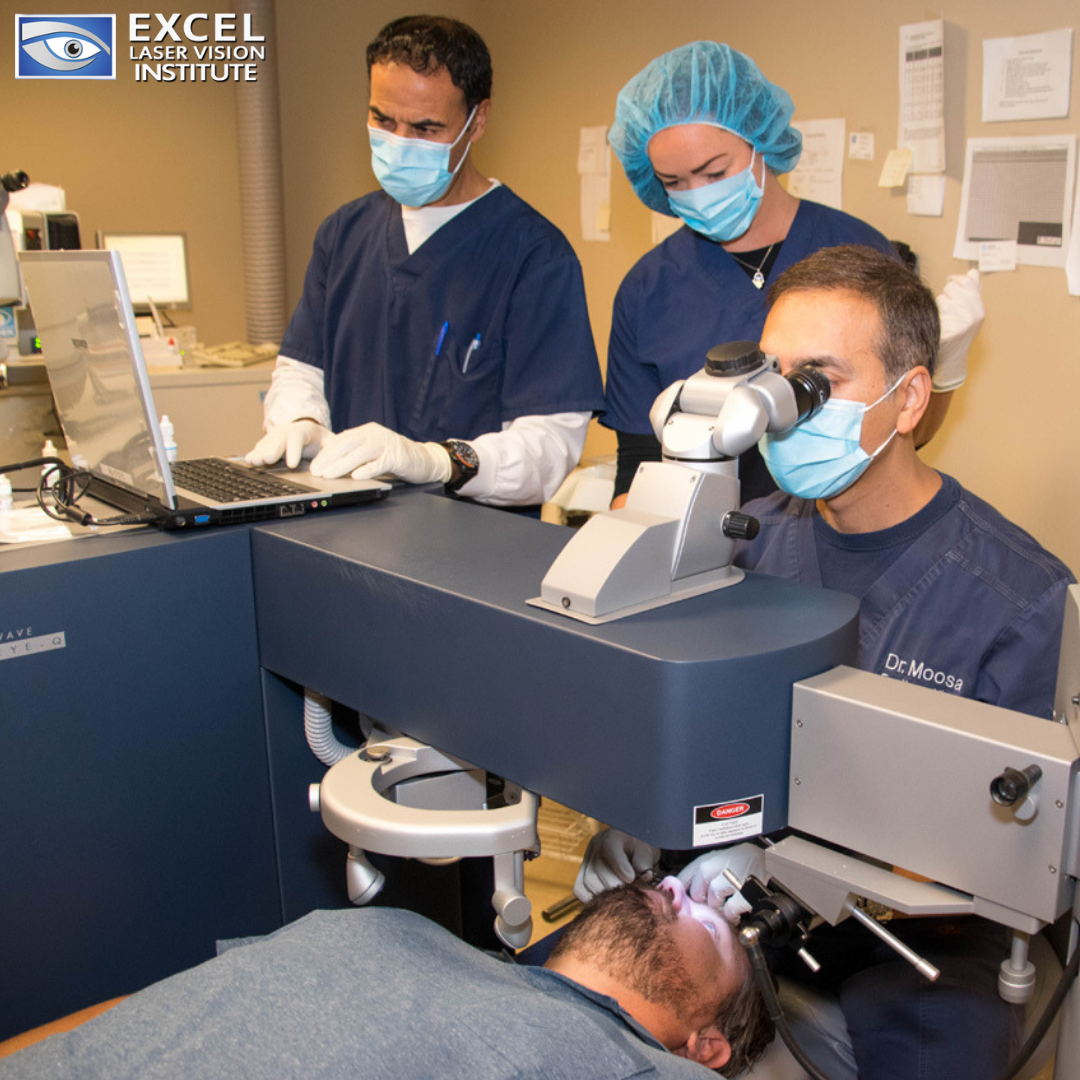
What Are Eye Floaters?
Are you seeing little spots, specks, and spider webs floating randomly within your area of vision? Although they are a nuisance, a lasik surgeon in Orange County says that eye floaters and spots are extremely common and usually aren’t much to worry about.
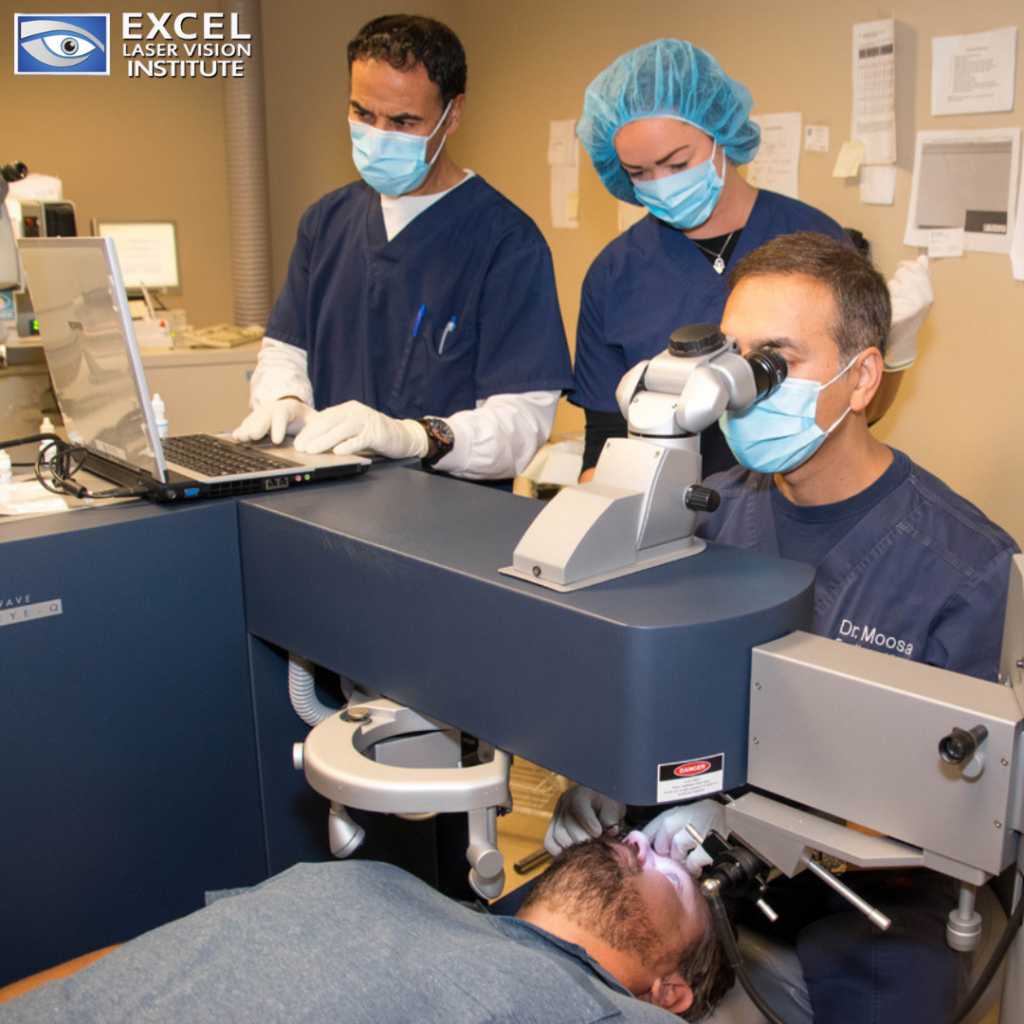
What Are The Symptoms of Eye Floaters?
Floaters have earned their name by, you guessed it, floating around the eye. They tend to bound and dash away when you make an effort to focus on them.
They come in many different sizes and shapes such as the following:
- Rings
- Squiggly lines
- Cobwebs
- Threadlike strands
- Black or grey dots
When you get them, they initially might not flee easily but over time, more than likely, you will notice them less.
What Causes Eye Floaters?
You get floaters and spots in your vision when pieces of the eye’s gel-like vitreous gets within the back part of your eye. At birth and throughout our younger years, the vitreous has a gel-like consistency. However, as we age, the vitreous starts to break down and liquefy creating a watery center.
Some of these undissolved gel particles periodically make their way into the liquid center of the vitreous and begin to float there. These particles are what the lasik surgeon in Orange County refer to as “eye floaters”.
These spots and eye floaters are usually very noticeable if you stare at a clear or overcast sky, or even a computer screen that has a white or light-colored background. You can’t actually see the tiny bits of debris drifting inside your eye. What you are seeing are the shadows these floaters cast on the retina as light passes through the eye.
You probably have a tough time focusing on these specks, since they never want to stay still. The reason for this is the floaters and spots move around when the eye and the vitreous gel shift, creating the effect that they are moving about aimlessly.
What Causes Eye Flashes?
Normally, light entering the eye stimulates the retina. This creates an electrical impulse, which the optic nerve sends to the brain. The brain then translates this impulse as light or some kind of image.
In the event that the retina is mechanically stimulated (physically touched or pulled), an identical electrical impulse is transmitted to the brain. The impulse is then interpreted as a flicker of light.
As soon as the retina is pulled, torn or detached from the back of the eye, the person affected will begin to notice a flash or flicker of light. The severity of the flashes and how short-lived or persistent they are depends on the extent of the traction, tear or detachment. These flashes usually continue until the retina is repaired.
Flashes, or photopsia, can also happen after a knock to the head shakes the vitreous gel inside the eye. When this happens, the person might experience “seeing stars”.
When Are Eye Floaters And Flashes a Cause For Concern?
Our lasik surgeon in Orange County advises to not be alarmed when you see some floaters every now and then. However, if you experience a downpour of floaters and spots followed by flashes of light, you should talk to an optometric physician.
The unexpected manifestation of these symptoms could signal that the vitreous has disconnected itself from your retina. This condition is known as posterior vitreous detachment. It means that the retina has possibly been knocked loose from the inner lining in the back of the eye. This lining is responsible for holding blood, nutrients, and oxygen that are important to healthy eye functions.
While the vitreous gel pulls on the fragile retina, a small tear or hole can develop. When the retina is damaged, vitreous can get into the opening and push the retina from the inner lining located at the back of the eye. This can cause retinal detachment.
A study published in Ophthalmology revealed that 39.7 percent of individuals who experienced the immediate symptoms of eye floaters and/or flashes of light, had a posterior vitreous detachment and 8.9 percent of them had a torn retina.
Further research discovered that approximately 50 percent of individuals with a retinal tear would go on to develop a detachment of the retina, resulting in considerable vision loss.
When retina tears or detachments occur, treatment must take place almost immediately in order for an eye surgeon to attempt to reattach the retina and regain eye function before vision is severely impacted.
Laser Treatment for Eye Floaters
A new laser procedure called laser vitreolysis is an excellent way to treat eye floaters. This is a safe and effective in-house procedure in which a laser beam is projected through the pupil and focused on large floaters. This breaks them down and/or sometimes vaporizes the floaters so they vanish or become less of a nuisance.
To find out whether you can benefit from laser eye treatment for eye floaters, or need a medical evaluation for eye flashes, get in touch with Excel Laser Vision Institute at + (818) 907-8606 to schedule a free eye examination. Board-certified ophthalmologist and respected Lasik surgeon Dr. Ferzaad Moosa will help you get the clear vision you want with effective state-of-the art laser eye treatment!
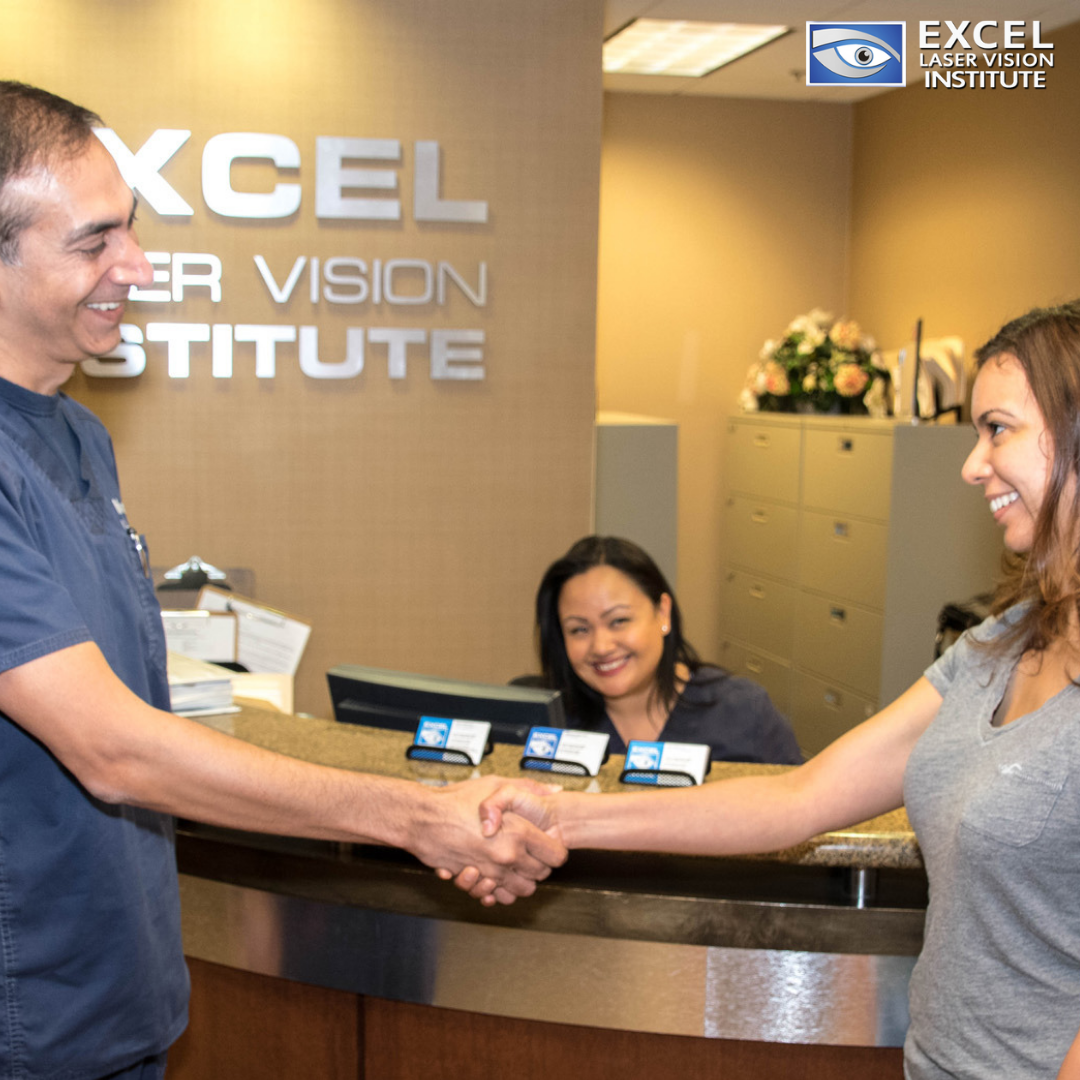
How To Treat Lazy Eye
Lasik surgeons in Los Angeles have treated many children for an eye condition referred to as ‘lazy eye’, known in the medical field as amblyopia. It develops when the sight within one of the child’s eyes doesn’t form as it should.
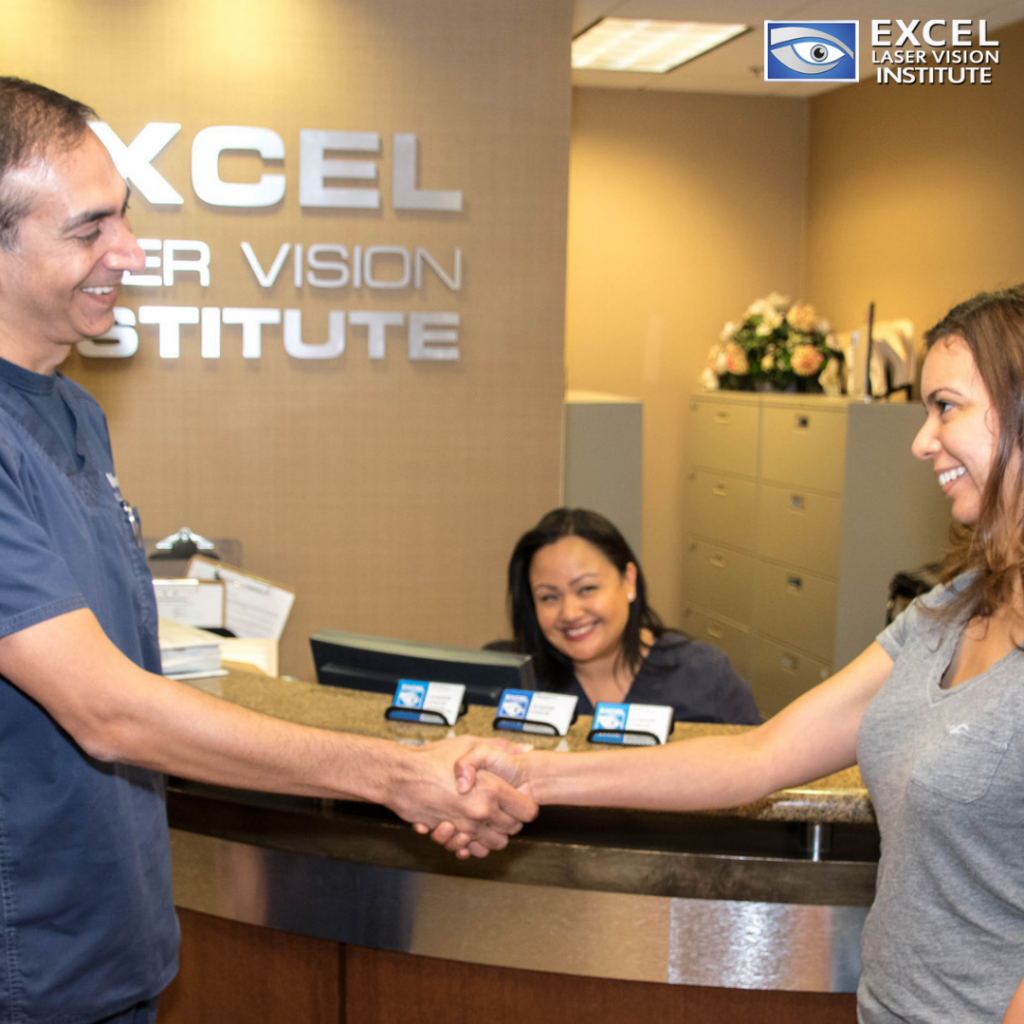
What Causes Amblyopia?
Amblyopia is a vision development disorder that causes an eye to fail, preventing it from acquiring normal visual acuity, despite the use of prescription eyeglasses or contact lenses. Normally, a lazy eye starts during infancy and early childhood. Lasik surgeons in Los Angeles noted that in many cases only one eye is affected. However, there have been some instances in which amblyopia has affected both eyes.
If the lazy eye is left untreated, the child’s brain will be trained to pay no attention to the image that comes from the respective damaged eye. If as a parent you allow this to happen, your child’s vision could be harmed permanently. Fortunately, if amblyopia is diagnosed early in life and treated immediately, impaired vision in the child can be prevented. On the other hand, an untreated lazy eye can lead to permanent loss of sight in the affected eye. Roughly 2 to 3 percent of the U.S. population has some degree of lazy eye.
Here are the three types of lazy eye infants and children could be affected by:
Strabismic amblyopia: This is the most common cause of lazy eyes. To prevent double vision due to poorly aligned eyes, the brain will disregard the visual input from the misaligned eye, which results in amblyopia in the eye.
Refractive amblyopia: There are times when a lazy eye is caused by unequal refractive errors in the two eyes, despite perfect eye alignment. For instance, one eye could have significant nearsightedness or farsightedness, while the other eye does not. In this circumstance, the brain depends on the eye with the less uncorrected refractive error and ignores the blurred vision from the other eye. This results in amblyopia in that eye because it isn’t being used.
Deprivation amblyopia: Similar to a congenital cataract, certain lazy eyes can occur when light is prevented from entering and focusing within a baby’s eye.
What Are The Signs And Symptoms Of Amblyopia?
Since amblyopia is often an issue of infant vision development, symptoms of a lazy eye can be a challenge to recognize. Most of the time, the common cause for lazy eye is because there is a misalignment of the eyes, otherwise known as strabismus.
Lasik surgeons in Los Angeles are adamant that if you notice your baby or toddler has crossed eyes or other obvious eye misalignments, book an appointment with an ophthalmologist as soon as possible.
If you are on the fence on whether your child has a lazy eye or not, try to cover one of their eyes. If he or she throws a tantrum, then your child might have amblyopia. This is a simple screening test that can be done at home.
If your child stays calm and collected when one eye is covered but cries when the other is, this may mean that the covered eye is the “good” eye. Meaning the uncovered eye is lazy and causing cloudy vision.
Obviously, this simple at-home test can’t replace a thorough eye exam. Many eye doctors will agree that a child’s first eye exam should be at around 6 months to be certain their sight is developing properly and their eyes are synchronized.
How to Correct a Lazy Eye?
When the lazy eye is caused by refractive amblyopia (the eye has unequal refractive errors), seeing normally is possible by completely correcting refractive errors in both eyes with glasses or contact lenses. More often than not, the good eye has to wear a patch to force the brain to focus on the visual input from the lazy eye and make normal vision development possible in that eye.
Treating strabismic amblyopia (lazy eye that occurs with misaligned eyes) usually includes strabismus surgery to align the eyes, accompanied by regular use of an eye patch on the dominant eye and some method of vision therapy ( particular lazy eye exercises) to assist both eyes to work simultaneously.
The child may need to wear an eye patch for a duration of time to make the brain use the lazy eye normally. If the child has a habit of taking off the eye patch, you might want to think about getting a specially designed prosthetic contact lens that stops light from entering the good eye and does not alter your child’s appearance.
Even though prosthetic contact lenses are more expensive than eye patches and a contact lens exam and fitting are needed, they work very well in difficult circumstances of amblyopia treatment when the eye patch method doesn’t work.
Another method to treat lazy eye is with atropine eye drops. They work by blurring the vision in the good eye, causing the brain to have to use the eye affected with amblyopia. This strengthens the lazy eye without using eye patches or contact lenses.
If you think your child or you are suffering from amblyopia (lazy eye), do not hesitate to contact Excel Laser Vision Institute at + (818) 907-8606 to schedule a FREE evaluation.
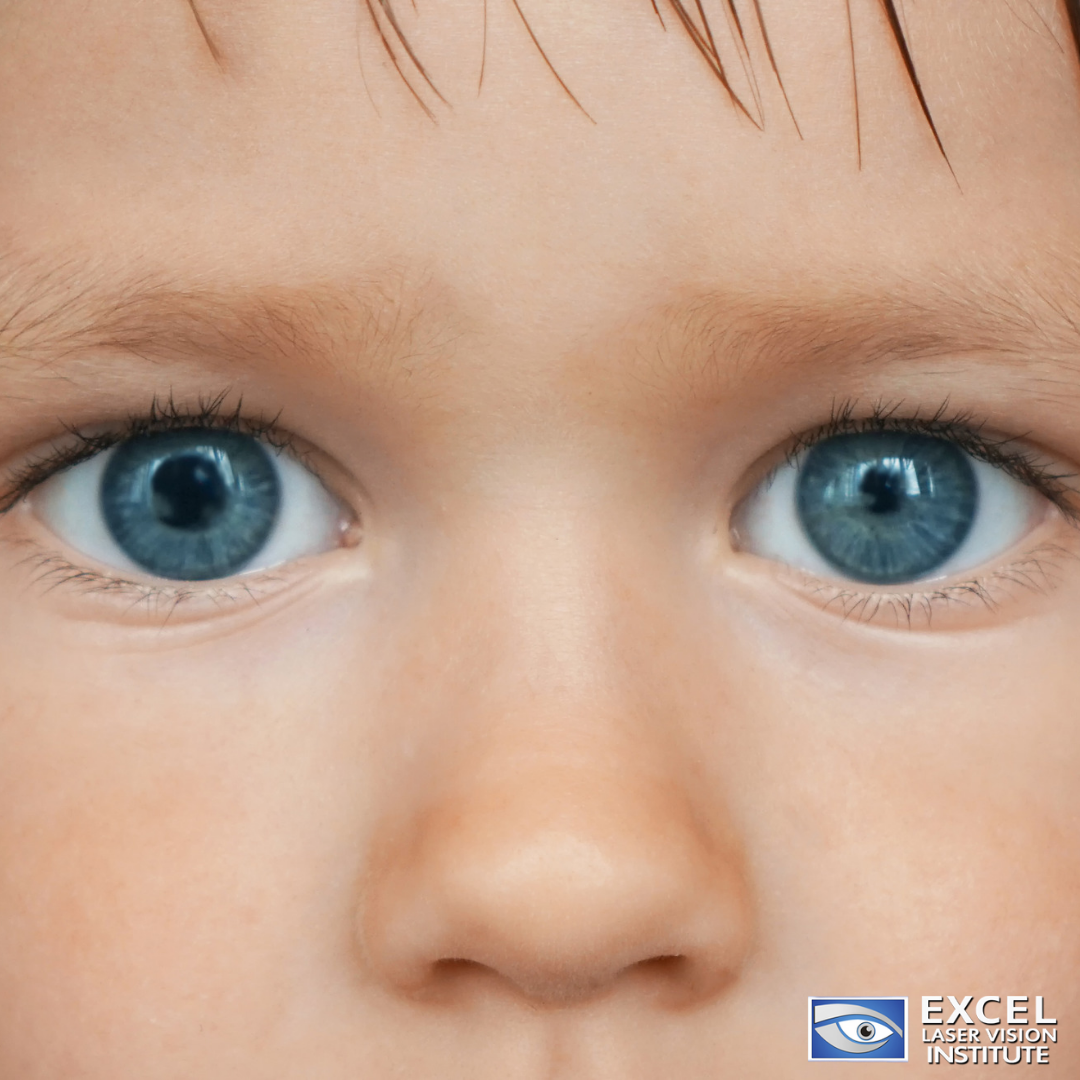
What Is Anisocoria?
If you carefully take a look at your eyes in a mirror, you might notice that one of your pupils is significantly bigger than the other. If that is the case, corrective eye surgery specialists claim you might have anisocoria.
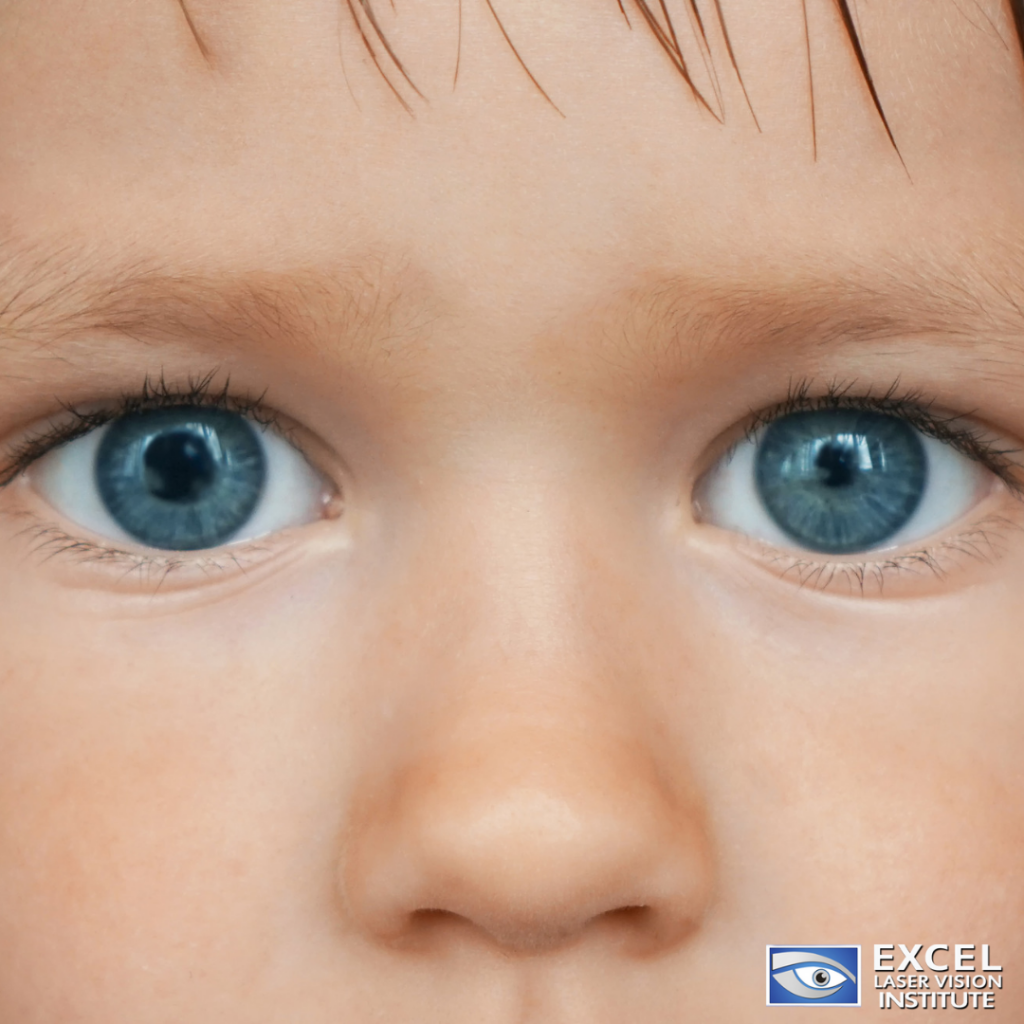
What’s Anisocoria?
Anisocoria is a medical condition that causes a person’s pupil in one eye to be different in size than the other. Just to be clear, the pupils are the black circles located in the center of the eyes. Most of the time, pupils are the same size.
Corrective eye surgery specialists agree that anisocoria can be brought on by many factors. For instance, you can be born with it or develop it later in life. It is possible to experience anisocoria either on a permanent basis or just temporarily. There is the possibility that while the doctor is examining your eyes, he or she diagnoses an underlying medical condition or another cause for anisocoria.
What Causes Anisocoria?
Most of the time, mild anisocoria is normal and there isn’t any hidden illness or history of trauma that has brought it on. In most cases, these instances of anisocoria where one pupil is bigger than the other by less than 1.0 mm with no probable cause are referred to as simple anisocoria, benign anisocoria or physiologic anisocoria.
Researchers conducted a study on anisocoria in which they photographed 128 normal participants in dim light for five consecutive days. Photographs were taken daily in the morning and afternoon.
Around 52 of the participants (42 percent) had an anisocoria of 0.4 mm or more a few times during the five days the study was conducted. About 19 percent of the study’s participants showed evidence of mild anisocoria.
Anisocoria did not alternate in response to the time of day or from one day to the next. Also, it was not affected by the gender, age, or eye color of the participant.
Other studies revealed that around 20 percent of the population has mild benign anisocoria.
On the other hand, critical anisocoria has several causes, several of which are medical issues. Some reasons for significant anisocoria include the following:
- Eye trauma. Getting punched in the eye. (e.g. David Bowie)
- Some eye medications such as pilocarpine eye drops which are used to treat glaucoma can make the pupil of the treated eye smaller than the other pupil.
- An inflamed iris. Iritis (anterior uveitis) can result in anisocoria that is usually followed by severe eye pain.
- Adie’s tonic pupil. It is a benign condition that is also known as Adie’s pupil, tonic pupil, or Adie’s syndrome and usually causes one pupil to be significantly bigger than the other. The pupil that has this condition does not react to light. In many cases, the reason for Adie’s pupil is a mystery. However, it can be linked to eye trauma such as trauma from complicated corrective eye surgery, lack of blood flow (ischemia) or infection.
- Neurological disorders. Several conditions that cause damage to the nerves in the brain or spinal cord can result in anisocoria. One of the most common is Horner’s syndrome. Individuals who suffer from nervous system disorders that end up with anisocoria usually have a drooping eyelid, double vision and/or crossed eyes.
- Brain disorders that are connected with anisocoria are strokes, hemorrhage (impromptu or because of head injury) and, very rare, some tumors or infections.
What’s Horner’s Syndrome?
Horner’s syndrome is a combination of signs and symptoms that are a result of a disrupted nerve path that starts at the brain and travels to the face and eyes on one side of the body. Common signs and symptoms that a person is affected by Horner’s Syndrome are the following:
- A regularly small pupil (miosis)
- A massive difference in the pupil size between the two eyes
- Very little or lag when the affected pupil opens (dilates) in dim light
- Upper eyelid droops (ptosis)
- The eye has sunken appearance
- Lower lid lifts, sometimes known as upside-down ptosis
Normally, pupils can dilate within five seconds when the lights in a room are dimmed. A pupil infected with Horner’s syndrome usually takes 10 to 20 seconds to dilate in dim lighting or a darkened room.
Horner’s syndrome is usually brought about by an underlying medical issue, for example, a stroke, tumor, or spinal cord injury. However, corrective eye surgery specialists have seen some instances in which no cause can be found.
There is no particular treatment for Horner’s syndrome. However, if there is a link to an identified medical problem, treatment of that issue might be the solution for symptoms of Horner’s syndrome including anisocoria.
So, What About David Bowie’s Eyes?
David Bowie was an amazing singer, songwriter, and producer. Although he is famous for his music, he is also known for having particularly unique eyes. For those unfamiliar with David Bowie, he had two different colored eyes!
Many people think he had two completely different eye colors, which is a condition known as heterochromia. This is a misconception, the real reason for David Bowie’s fascinating eyes was due to anisocoria. David Bowie was born with blue eyes, but he was involved in a fight leaving one of his eyes permanently dilated. This gave the injured eye a much darker appearance.
While some wouldn’t mind looking like David Bowie, if you feel your pupils are inconsistent in size or if your symptoms persist and worsen it is best to seek medical attention immediately. If you need professional and caring corrective eye surgery advice, call Excel Laser Vision Institute at + (818) 907-8606 today.
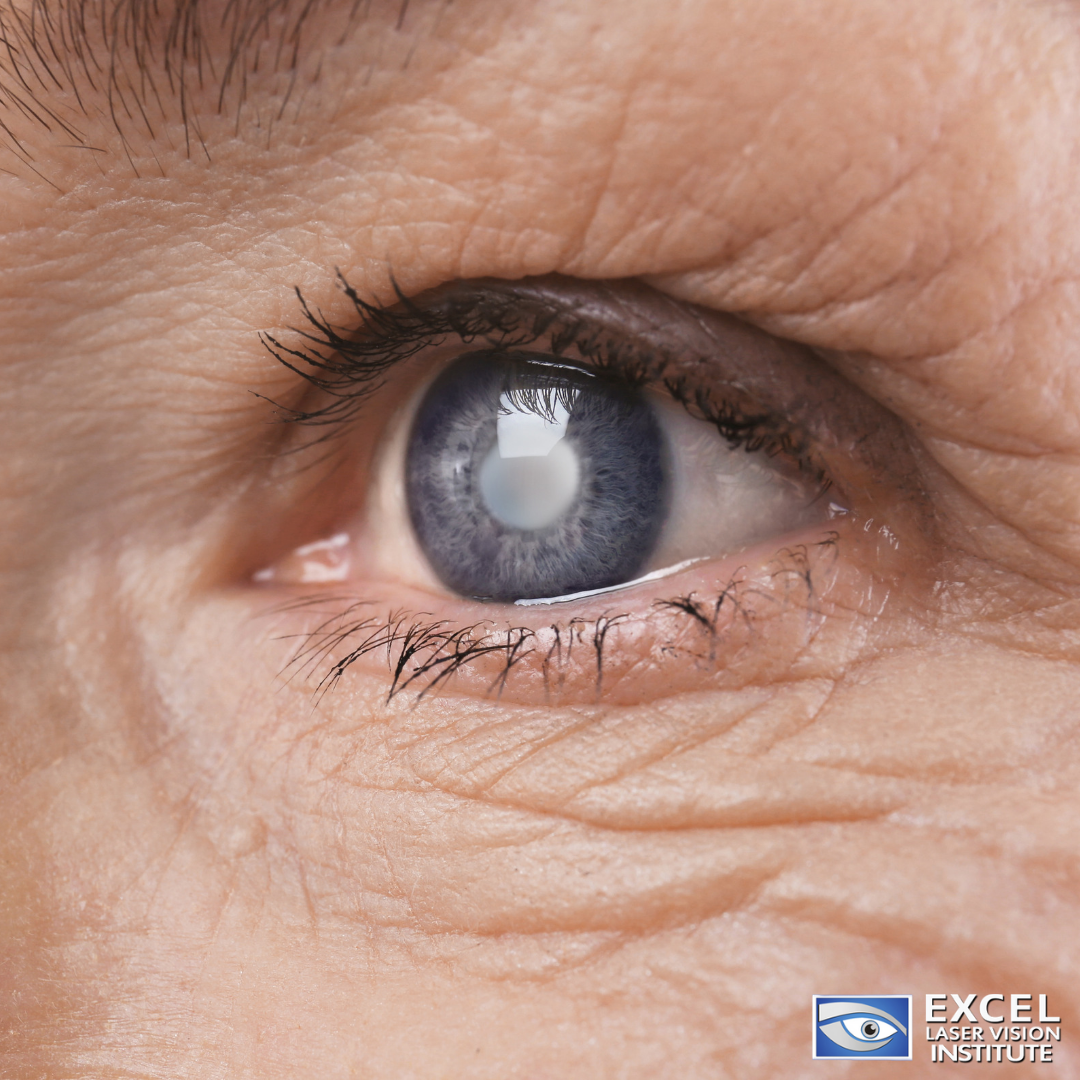
Who Needs Cataract Surgery in Los Angeles?
Are you seeing objects less clearly? Are they appearing blurry or foggy? If yes, it might be time to schedule a consultation for cataract surgery Los Angeles to try and remedy your vision problems. Before you undergo eye surgery, here are some information to understand what cataracts are and what the best solution to help you see 20/20 again is!

What Are Cataracts?
The eye contains a natural lens which bends, or in ophthalmology terms, refracts light rays that enter the eye to help us see. This lens should be clear to have optimal vision. Normally, when the eye is healthy with a clear lens, light passes through and focuses on the retina.
When a person has cataracts, the clear lens in their eye becomes cloudy. Many patients with cataracts see things as if they were looking through a frosty or fogged-up window. When light passes through the cloudy lens, it can’t focus clearly on the retina and that causes objects to appear hazy or blurred. This clouded vision can impact reading, driving a car (especially at night) or even seeing expressions on friends’ faces. When dealing with cataracts, you must address them quickly as to avoid becoming like people who have them and experience a blurry and less colorful vision.
Unfortunately, cataracts are the most common cause of vision loss in people over the age of 40. It is actually the main cause of blindness throughout the world! That is why it is so important to consult with a medical professional for cataract surgery in Los Angeles if you suspect you have them. The following are several common types of cataracts:
Cortical cataract: This is distinguished by white wedge-like opacities that begin in the periphery of the lens and travel towards the center in a spoke-like way. This cataract happens in the lens cortex, which is the part of the lens that encircles the central nucleus.
Nuclear cataract: This is formed deep within the nucleus of the eye’s lens. Nuclear cataracts are usually found in older patients.
Subcapsular cataract: This happens at the back of the lens. Diabetics or individuals taking high doses of steroid medications have an increased risk of developing subcapsular cataracts.
Congenital cataract: This type you are born with or develop during childhood. Congenital cataracts can be genetic or linked to an intrauterine infection or trauma. They also occur because of specific conditions such as myotonic dystrophy, galactosemia, neurofibromatosis type 2 or rubella. Some people with congenital cataracts have no issues with their vision. However, if they do, the cataracts are typically removed as soon as they are discovered.
What Are The Symptoms of Cataracts?
When you start to see the below changes in your vision, you may want to consider cataract surgery Los Angeles.
- Extra sensitivity to light
- Blurry vision
- Seeing double
- Trouble seeing at night, or you require more light when you read
- Bright colors seem faded or yellow
How Do You Get Cataracts?
The most common reason why people develop cataracts is simply due to aging. At around the age of 40, the eyes begin to deteriorate. The normal proteins in the lens begin to break down and the lens can become cloudy, though many might not experience vision complications until years later, if at all. Other causes of cataracts are the following:
- Medical conditions such as diabetes
- An eye injury, eye surgery, or radiation treatments on the upper body
- Parents, siblings or other family members who have cataracts
- Spending time in the sun without sunglasses with UV protection
- Taking medications such as corticosteroids or statins can cause early-onset cataracts
- Hypertension
- Obesity
- Smoking
- Excessive alcohol consumption
- Hormone replacement therapy
- High myopia
A majority of age-related cataracts develop gradually. However, other forms of cataracts can develop rapidly, such as the types found in younger individuals or diabetics. Sadly, there isn’t a way for doctors to predict how fast a patient’s cataract will develop.
Can Lasik Surgery Correct Cataracts?
When a trained ophthalmologist discovers a patient has cataracts, many people think that LASIK is the sure solution. However, LASIK surgery often cannot correct vision loss caused by cataracts.
Cataracts worsen over time; which means cataract surgery is a more suitable option. That’s why LASIK surgery isn’t usually recommended to correct cataracts.
Despite this fact, there are exceptions. If an individual has small congenital cataracts that are steady and are not immensely affecting the person’s vision, LASIK may still be an option. Again, it all depends on the size and stability of these.
For other types of cataracts, as soon as the symptoms begin to appear, you can improve your vision for a while with a pair of new glasses, strong bifocals, magnification, the right lighting or other visual aid methods. Your doctor will consider you for surgery when your cataracts have developed to the extent that they are impairing your vision and preventing you from carrying out your daily routine.
Some people take aging and poor vision hand in hand, however, cataract surgery Los Angeles is a simple and painless procedure that can help you regain your vision and improve your life. If you think you might be suffering from cataracts or are still researching your options, call our representatives at Excel Laser Vision Institute who will be happy to help. Contact us at +1 866 923 9235 to discuss cataracts or laser eye surgery, advantages, and other aspects you are concerned about.
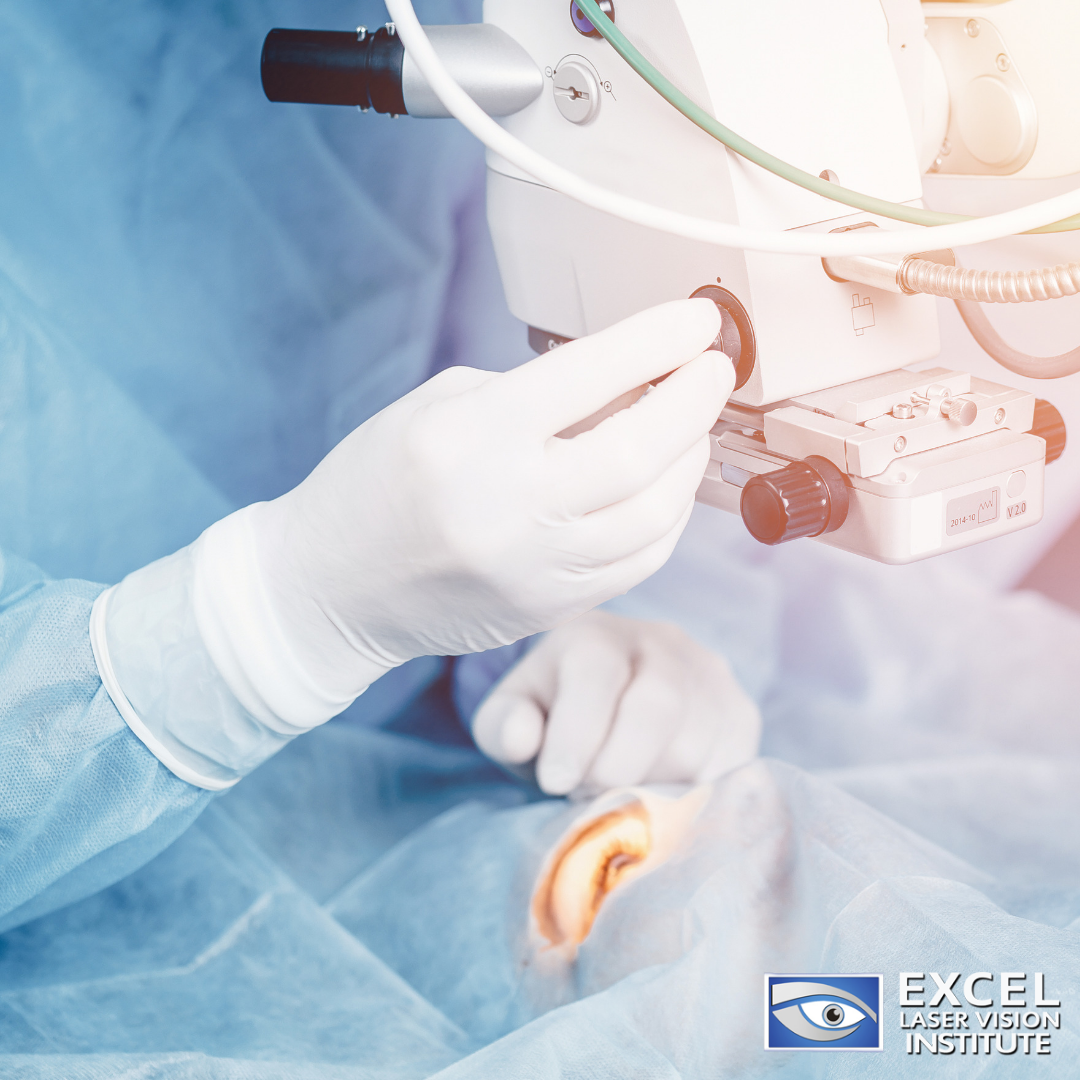
Can Laser Vision Correction Los Angeles Treat Double Vision?
Double vision, or diplopia, is an eye complication that has an entire range of underlying reasons why someone might experience it. It’s like waking up with a dull headache and wondering how you got it. So, before you book laser vision correction Los Angeles, read the list of causes for double vision. However, we must warn you, there are so many possibilities to consider that after reading this you might be seeing things in twos!

What Is Double Vision?
Unfortunately, many of us take for granted that when we open our eyes we see, and view our surroundings clearly and in one single image. Normal eyesight happens through a complex process that requires many parts within your eye to work harmoniously without any hitches.
A person can have double vision in just one eye or both. If you notice that you are experiencing double vision in one eye when the other one is closed, there is very little to worry about. It is still something you should point out to your doctor when you visit laser vision correction Los Angeles. However, if double vision is occurring when both of your eyes are open, it could be caused by a serious disorder.
To understand how the eye malfunctions, here is a brief and simple biology lesson on the parts of the eye and how they work as one.
You are experiencing double vision when the injured eye is open:
Cornea: Think of it as the clear window into your eye. Its primary job is to focus light. If your double vision disappears when you cover one eye, this could be a sign of a damaged cornea in the uncovered eye.
If only one cornea is distorted, you may see only double in that eye. Damage can be brought about by:
- Scars
- Dryness
- Infections, such as shingles or herpes
- Keratoconus, when the cornea turns into a cone shape
Lens: Located behind your pupil, these help focus light onto your retina.
The most common lens complications at the laser vision correction Los Angeles are cataracts, which can usually be treated with surgery.
You are experiencing double vision when both eyes are open:
Muscles: They manage eye movement and help control them so they are aligned with each other. Whenever you notice a person’s eye is not moving in sync with the other, that is due to weak muscles in one eye unable to keep up with the other. When this happens, looking into a direction that the weak muscle is controlling will lead you to see double. Eye muscle issues can be caused by any of the following:
- A complication with the nerves that control them.
- Graves’ disease, a thyroid condition that disturbs eye muscles. This can result in vertical diplopia, which is when the person sees one image on top of the other.
- Myasthenia gravis, an autoimmune disease that prevents nerves from telling muscles what to do. Early symptoms are double vision and drooping eyelids.
Nerves: These are the messengers that convey information from your brain to your eyes. Any issues with them can create double vision:
- Multiple sclerosis can negatively influence the nerves in your brain or spinal cord. If the illness damages the nerves that manage the eye, you may start to see double.
- Guillain-Barre syndrome is a nerve condition that results in paralysis. The initial symptoms are usually in the eyes, including double vision.
- Diabetes can bring about nerve damage to the muscles that are responsible for moving your eyes. This could also result in double vision.
Brain: The nerves that manage your eyes link straight to your brain, where images are processed. Many reasons for double vision begin in the brain. Here are some examples:
- Brain tumors
- Migraine headaches
- Strokes
- Aneurysms
- Extreme pressure inside the brain caused by trauma, bleeding, or infection
What Are The Symptoms Of Double Vision?
The symptoms for double vision really depend on the cause, but if you have it, you may notice the following:
- Nausea
- Headache
- Droopy eyelids
- Weakness in your eyes or elsewhere
- Pain around your eyes, such as your temples or eyebrows
- Pain when you move your eye
- Misalignment of one or both eyes, such as a wandering eye or cross-eye presence
Since there are so many reasons for seeing double, it’s important to find out why you can’t see just one image.
As is standard procedure, your doctor might use several methods to determine what is causing your double vision. This can be done through blood tests, a physical exam, or imaging tests like computed tomography (CT) or magnetic resonance imaging (MRI).
Also, another effective tool the doctor has on hand is you! Be honest when answering your medical practitioner’s questions which could include the following:
When did you begin to see double?
Were you involved in a car accident?
At any time recently, have you hit your head, fallen or been unconscious?
Do you feel the double vision is worse after a long day, or when you are exhausted?
Are you experiencing other symptoms besides double vision?
Do you find you have to tilt your head to one side to view objects properly?
Do you have double vision in both eyes or just when one eye is open?
Can Lasik Surgery Fix Double Vision?
When you start to experience double vision, it’s important to try to eliminate any potential causes. For instance, stop drinking excessively, walk away from your computer screen every hour to refresh your eyes, or use drops to lubricate dry eyes.
When all is said and done, there are restricted cases in which LASIK can be used to correct double vision. It isn’t a straightforward issue and a consultation from an experienced, board-certified ophthalmologist and respected Lasik surgeon such as Dr. Ferzaad Moosa is necessary. If you are seeing double, contact Excel Laser Vision Institute at + (818) 907-8606 now to schedule a FREE evaluation and see if you’re a good candidate for LASIK treatment!
Last-Minute Tips Before Going to Your Lasik Eye Center in Los Angeles for Surgery

6 Last-Minute Tips for Lasik Surgery
Lasik surgery typically takes just a few minutes of precise, computer-controlled laser surgery to reshape the cornea and restore clear eyesight. With over a 95% success rate, it’s one of the safest and most effective ways to correct myopia, astigmatism, farsightedness, and other refractive errors.
Complications from the procedure are extremely rare, and recovery is usually fast and painless. Here are several steps you can take to make the process easier before and after your surgery:
- Stop wearing your contact lenses around two weeks before the procedure.
Contacts tend to reshape corneas, so Lasik surgeons recommend that patients stop wearing them to allow the eyes to return to their normal state.
- Apply your prescription eye drops.
Your eye surgeon may recommend prescription eye drops for dry eyes before your surgery. Make sure you follow the application routine. This will help prevent discomfort after the procedure and assist the healing process.
- Have someone pick you up from the clinic.
Your eyes will be extra sensitive after the surgery. Avoid exposing your eyes to road glare, harsh lights, and strain by arranging for someone to drive or accompany you home from the Lasik eye center in Los Angeles.
- Take a bath and wash your hair the day of your procedure.
To protect your sensitive eyes from water and soap, avoid taking direct showers for at least a week after the procedure. Take a thorough bath and wash your hair right before your surgery.
- Ask a friend or relative to take care of your pets while you recover.
You will have to take it slow and rest as much as you can the first few days after getting corrective eye surgery. If you have pets, consider asking a friend or relative to take them in for a while. This ensures that your pets get walked and fed while you recover from the operation. This also minimizes the risk of exposing your eyes to the sun and pet hair.
- Shop ahead for groceries and prepare food.
Preparing several meals that will last a few days after your surgery ensures that you’re eating healthy meals to aid your recovery. It will also help you avoid standing over a hot stove or oven right after getting Lasik.
Begin Your Journey to Crystal Clear Vision
Now that you’re done with your preparations, the only thing left is to go in for your Lasik surgery appointment. Before you know it, you’ll be enjoying perfect vision without the need for glasses or contacts for many years to come!
Still researching your options? Our representatives here at Excel Laser Vision Institute would be happy to help. Call us at +1 866 923 9235 to discuss laser eye surgery cost, benefits, and other factors that will affect your procedure.
Sharpen Your Eyesight for Shooting Sports with Corrective Eye Surgery
Poor eyesight is a critical impairment in shooting sports. Without proper vision, your ability to pinpoint your target and calculate the force and distance to hit it is diminished. Conventional treatments such as glasses and contacts won’t cut it, especially when it comes to fast-paced shooting sports like paintball. This is where corrective eye surgery comes into play.

Keep Your Abilities Unaffected With Lasik Eye Surgery
Get excellent eyesight for years without the upkeep hassles and misplacement risks that come with prescription glasses and contact lenses. Have your vision corrected with laser surgery to improve your participation in these vision-focused activities:
- Darts – When it comes to playing darts, you need to visually zero in on the target. Having a clear vision will help you reduce the margin of errors and enhance your throwing accuracy.
- Archery – Aiming at a target requires excellent eyesight. Blurred vision and compromised depth perception can ruin your chances of hitting your mark. Get Lasik surgery to keep your eyes keen without relying on cumbersome glasses and contacts.
- Gun Shooting Sports – Aiming at a target is easy even with compromised vision. Hitting it accurately, however, is another story. To get a clear shot, you need to have 20/20 vision. Clear eyesight will help your ace accuracy and give you further ability to ace your sport.
- Paintball – Paintball involves fast-paced movement. Keen eyesight is crucial in this sport, not only to avoid getting hit but also to shoot moving targets.
While you can partake in these physical activities with contact lenses or glasses, having laser corrected eye will lessen your dependence on these visual aids.
Corrective Eye Surgery Technology
While refractive eye surgery doesn’t come cheap, it’s an investment in your future visual performance and will pay off in the long run. This is why, just like in your favorite shooting sport, you should seek out your target surgeon with ample awareness and preparations.
Lasik surgery costs vary depending on the procedure and the doctor in charge of the operation. Here are some of the instruments used by practitioners of the best laser eye surgery in Los Angeles:
- VisuMax Laser
A groundbreaking instrument designed for eye correction surgery, the VisuMax laser cuts the cornea precisely while gently applying the treatment. It covers a wide array of corneal surgery techniques, including precise cutting for Femto-Lasik, corneal transplants, incisions for intracorneal tunnel segments, and ReLEx SMILE.
- WaveLight EX500 Excimer Laser
The latest, FDA-approved WaveLight EX500 reduces corneal dehydration, minimizes fixation fatigue, and gives way to perfect centration during the procedure. Its cutting-edge abilities include:
-
- Highest precision eye-tracking technology
- Fastest speed for excimer laser at 500Hz
- Can carry out topography-guided Lasik
Perfect Your Aim with Keen Eyes
With precise laser instruments that hit their corneal targets and surgeries led by experienced ophthalmologists, you can sharpen your eyesight with corrective eye surgery. Get the procedure to hit the bullseye in your sport.
For cutting edge and precise Lasik in Orange County and Los Angeles, Excel Laser Vision Institute is the clinic you can count on. With board-certified ophthalmologist and respected Lasik surgeon Dr. Ferzaad Moosa at the helm, you’ll get the clear vision you deserve. Call + (818) 907-8606 now to schedule a FREE evaluation!

